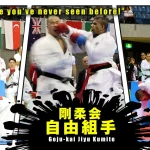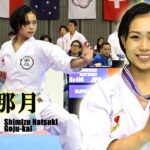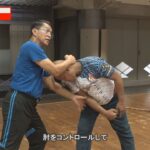Aikido Pioneers: Kenneth Cottier, the British Man Who Taught Aikido to Hong Kong
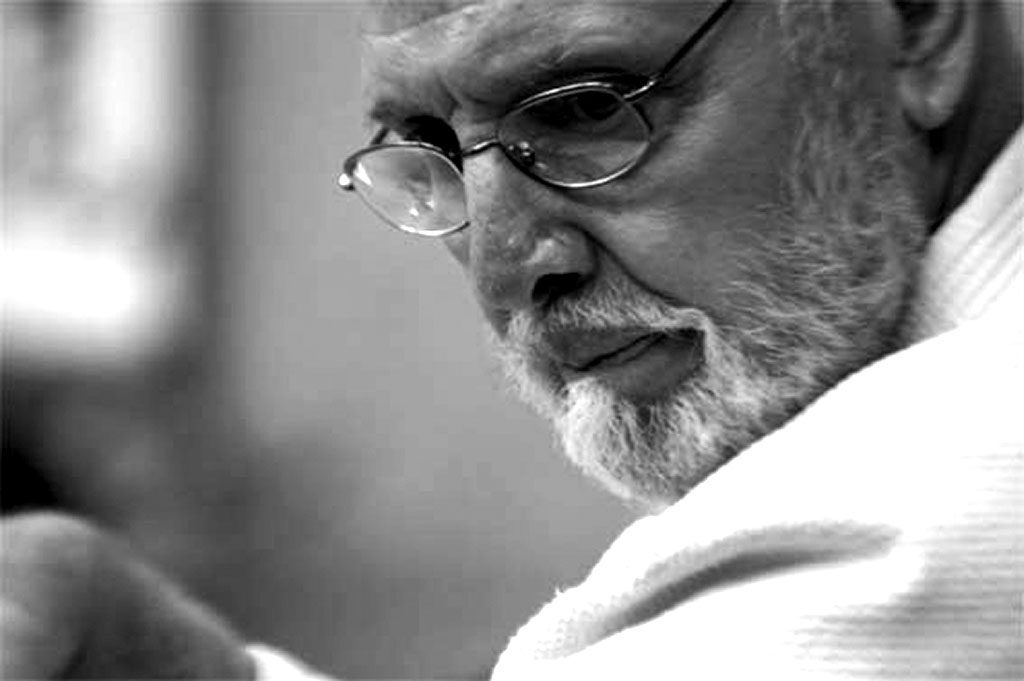
Kenneth George Edward Cottier was born near Liverpool from a working class family on December 14th, 1933, which, as he always liked to point out, was exactly 50 years after O Sensei.
Budo beginnings
Cottier started practicing judo in 1958 in Birkenhead in a dojo that was part of the British Judo Council, headed by 阿部謙四郎 Sensei. Abe Sensei had received a 6th dan in aikido from Ueshiba Morihei Sensei and he used to give aikido sessions during his judo seminars in London. After such a class in London, Cottier decided to join a local aikido study group led by Terry Ezra. Cottier traveled to Japan for the first time to attend the 1964 Olympics.
Abe Sensei said I should go see O Sensei and practice Aikido. Maybe he thought I was hopeless at Judo anyway and was glad to get rid of me, I don’t know. I did join the Kodokan but I never practiced there.
Meeting O Sensei
Cottier entered the Aikikai Hombu Dojo on a cold Monday evening in 1964 and got the chance to see O Sensei.
O sensei radiated warmth, smiled at times, and spoke to one or two people individually. I likened what I was seeing to a grandfather chatting away to his grandchildren. I could not believe that a man of 81 could display such coordination, could react so quickly, and yet maintain such a solid posture. […]
Cottier decided to register immediately. He attended many classes of O sensei, as well as that of the other Hombu teachers.
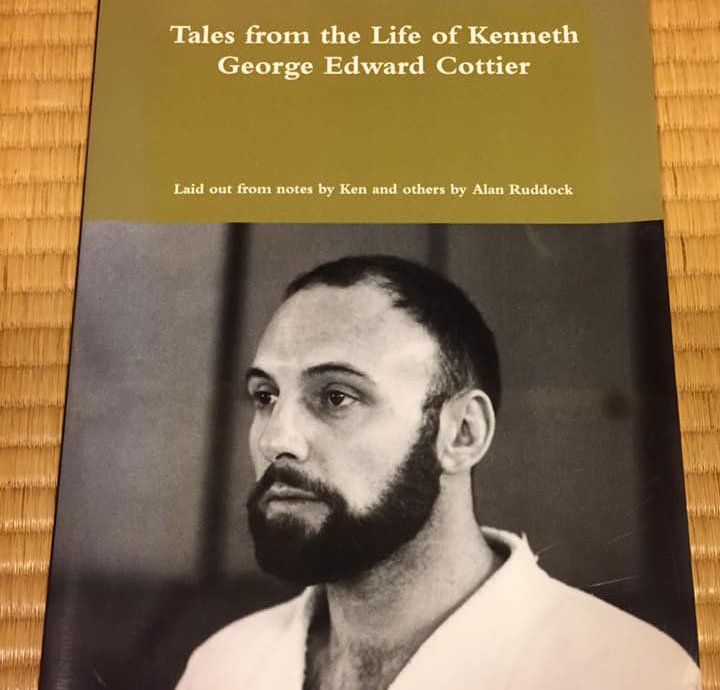
Collection of memoirs from Ken Cottier collected by Alan Ruddock.
There were about 12 foreigners regularly training at Hombu Dojo. They met both on and off the mat and helped each other with everyday life. Cottier was known in the dojo as a very funny man who often made jokes.
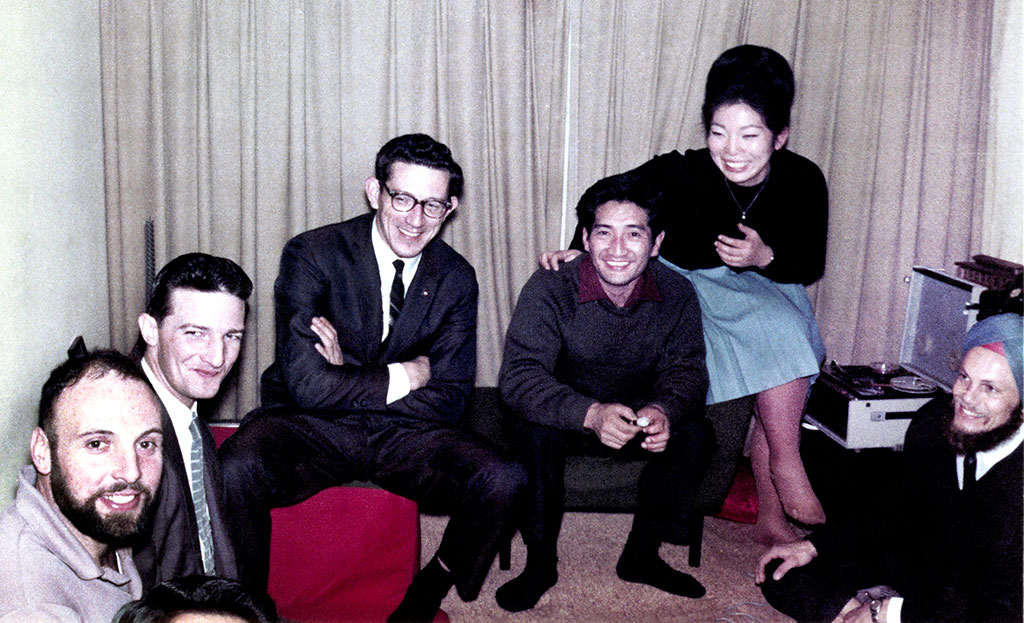
Group shot at party for Ken, (L to R: Ken Cottier, Norman Miles, Bob Nadeau, Henry Kono, Joanne Shimamoto, Per Winter)
Group shot from Tohei Sensei’s class in Iidabashi Dojo (Front row: Second from the left, Joe Deisher, fourth and fifth from the left, Tohei Koichi and Henry Kono. Back row: From the left, Ken Cottier, Joanne Shimamoto, Per Winter, and Alan Ruddock).
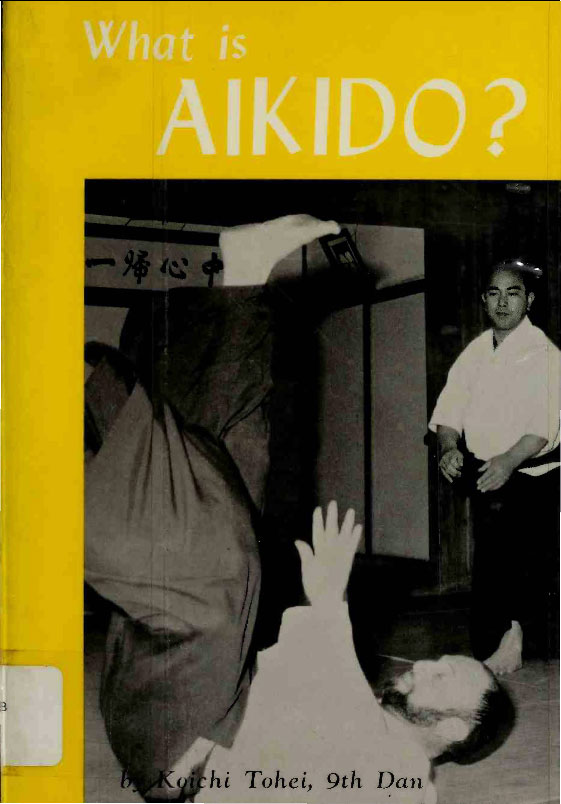
Cover of Tohei Koichi’s book “What is Aikido”, featuring Ken Cottier as uke.
The group had privileged access to O Sensei since he was still living in the dojo at the time. On one occasion, the group decided to bake a cake to celebrate O Sensei’s birthday and to bring it to him.
Joanne Shimamoto asked me if I wanted to be part of O Sensei’s birthday, I asked when it was and she said “December 14th. I said “oh, same day as me”, but I don’t think she believed me! (laughs)
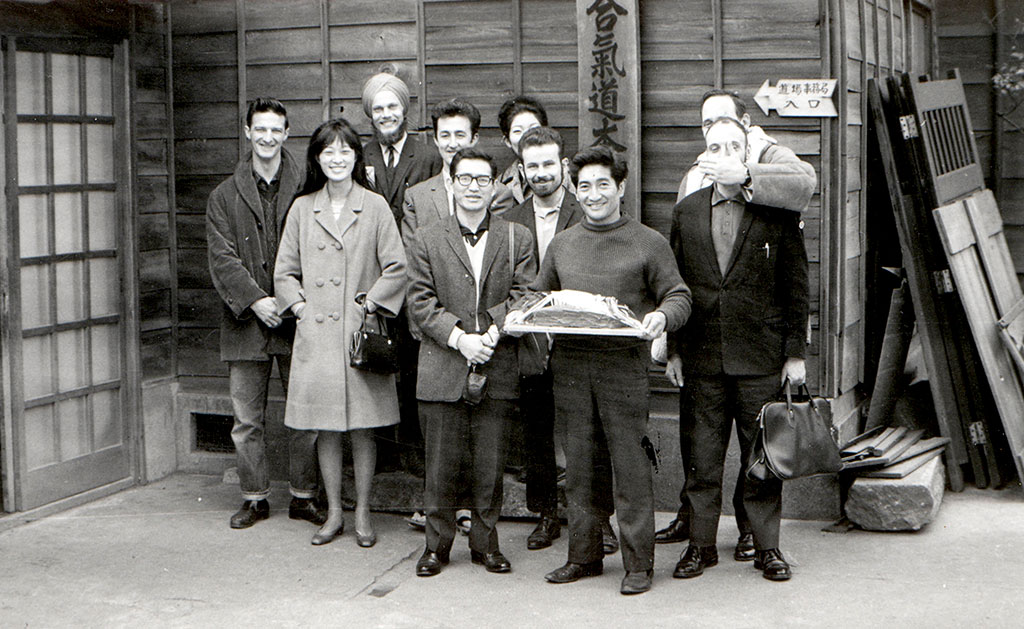
The group with O Sensei’s cake outside of the Hombu Dojo (photo taken by George Willard). Left to right: Norman Miles, Joanne Willard, Per Winter, Alan Ruddock, unknown, Joanne Shimamoto, Joe Deisher, Henry Kono, and Terry Dobson goofing around with Ken Cottier.
Cottier made a living teaching English conversation at several schools as well as privately. He also taught a number of aikido practitioners. Most of his time was spent training and at the time, students were allowed to stay at the dojo between classes to continue practicing.
One morning, George Willard and I were the only ones left in the dojo after the morning classes. Because of George’s strong grip I could not move him. Suddenly the door opened and he was in the dojo. He told George to take hold of him, George, out of respect, did not use his full power, O Sensei, sensing this, let George clearly know that he wanted him to grab strongly the way he had grabbed me. What he did was simply aim a punch at George’s face. He then turned to me, gave me a look that said, did you understand? Then he walked across the dojo into his house.
Cottier took his shodan examination in front of Ueshiba Kisshomaru in December 1965.
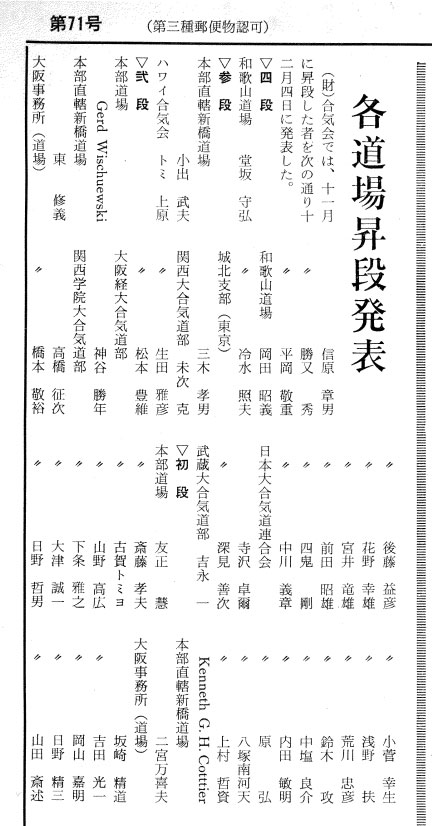
December 1965 issue of the Aikido Shinbun showing the list of promotees. Cottier is listed as shodan.
In spite of wanting to stay in Japan, Cottier had to return to England in March 1967 in order to care for his mother who had fallen ill. He remained in England for two years and kept practicing aikido, including during seminars under Chiba Kazuo Sensei, who had moved to England as a representative of the Aikikai in 1966.
Second trip
Eager to meet O Sensei again, Cottier left England once again, this time by passenger liner, on April 18th, 1969. During the trip, he received a letter sent at one of the ports by Joanne Shimamoto to inform him that O Sensei had passed away on April 26th.
I can remember leaning on the handrail of the ship, crying to myself.
Restarting aikido in Hong Kong
Ken Cottier was dispatched to Hong Kong in May 1971 as a 3rd dan and an official representative of Hombu in order to restart the Aikido practice that Virginia Mayhew had initiated a few years before.
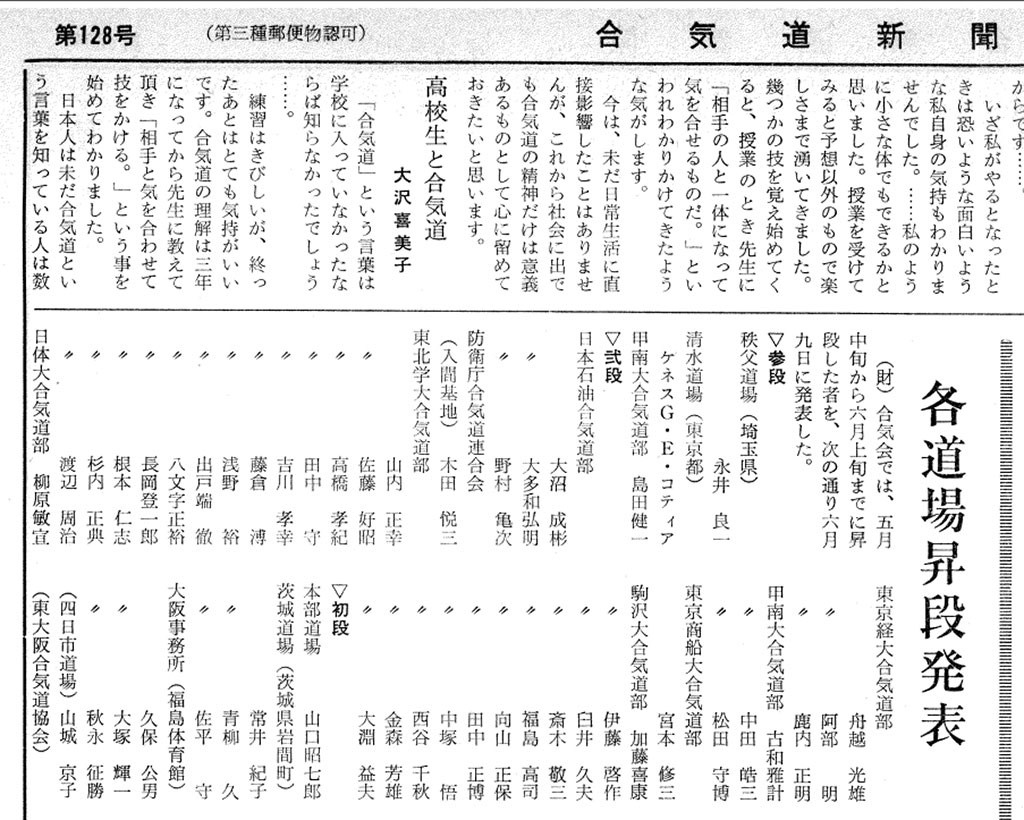
June 1971 issue of the Aikido Shinbun showing Cottier’s promotion to sandan.
He set up the Hong Kong Aikido Association with the help of Leonard Leung and his brother George.
These people had been well trained by Virgina Mayhew so as soon as I got there, I graded two of them to 2nd kyu.
Cottier and the Lung brothers rented a flat on Homantin Street, Kowloon. They knocked down the walls in order to allow sufficient space to set up a training area.
We were living in a standard flat where tradesmen or people outside of Aikido lived. On seeing a dojo with O Sensei’s picture, a matted floor, bokken, jo, and other stuff I had acquired, rather than tables, chairs, and the likes, they were quite surprised. Some would ask me many questions, they wondered: ‘What the hell is going on here?’
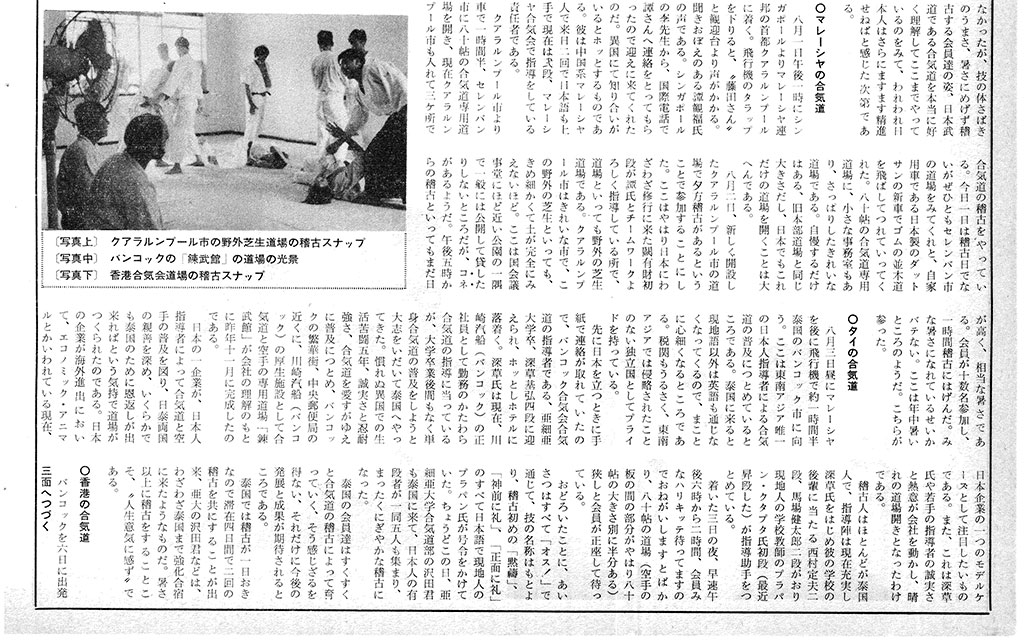
Article written by Fujita Masatake in the October 1971 issue of the Aikido Shinbun. Cottier is visible kneeling in the foreground on the left.
Cottier and his students actively promoted aikido via newspaper articles as well as participation in TV shows.
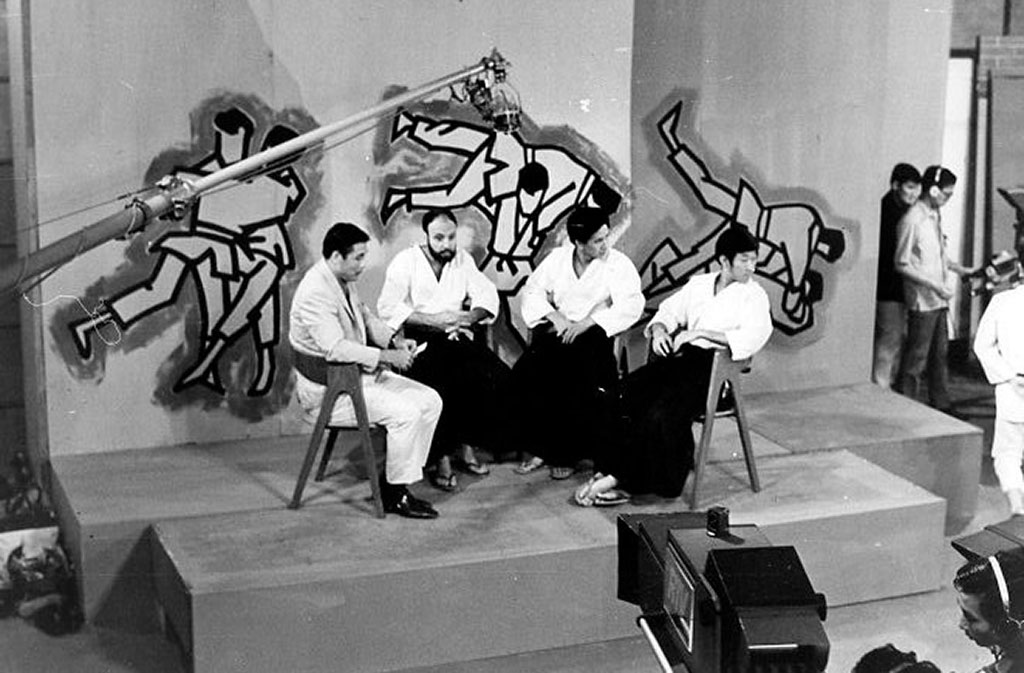
Ken Cottier interviewed on the TV Program “Enjoy Yourself Tonight (今宵歓楽)” broadcast in Hong Kong. Cottier actually injured his knee further while filming this program.
Before returning to Japan in September 1972, Cottier promoted Leonard Leung and his brother to shodan.
Return to Japan
Back in Japan, Cottier continued to train at the Aikikai Hombu Dojo. He was still a pillar of the foreigners community in Hombu, which had obviously grown larger with time.
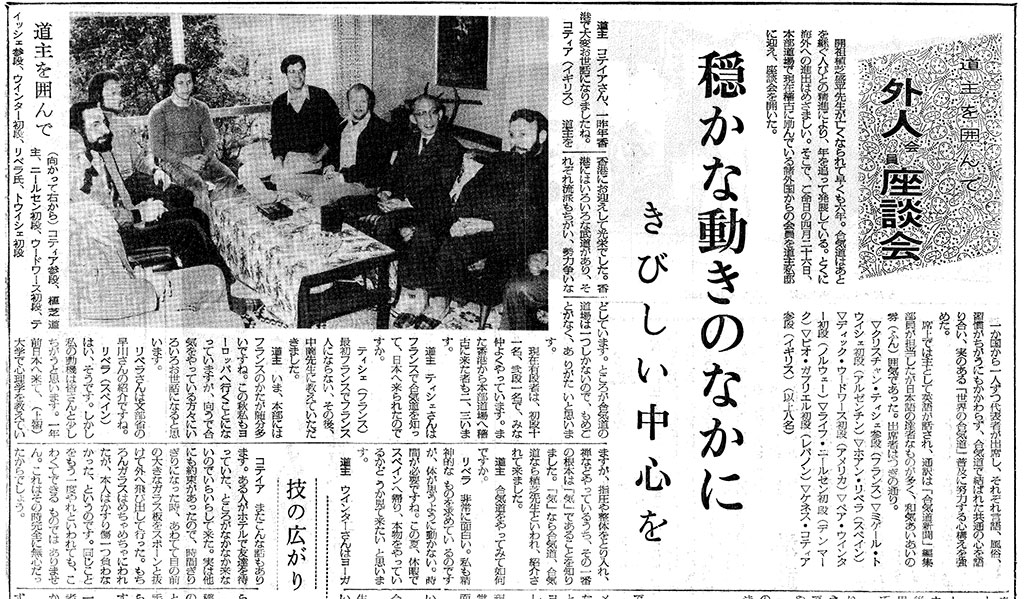
Report on a roundtable discussion that took place in May 1975 at Doshu’s house with foreign aikidoka. From left: Miguel Carlos Teuscher, Juan M. Rivera, Per Winter, Christian Tissier, Richard H. Woodworth, Leif Lyngard Nielsen, Doshu, Ken Cottier, Bio Gabriel (not visible).
Cottier made trips twice a year to Hong Kong to conduct seminars and examinations. He left Japan in 1981.
Cottier traveled to South Africa several times, where he promoted a number of students to dan grades. He also actively supported aikido practice in Singapore and the Philippines as an envoy of Hombu, and validated the application of two local groups for recognition by the Aikikai.
He returned to Hong Kong in 1991 to plan for the 20th anniversary of the Hong Kong Aikido Association held in August 1991, which would be attended by then Dojo-cho, Ueshiba Moriteru. Cottier intended to spend about nine months there but he ended up staying for six and a half years, ending with the planning of the 25th anniversary.
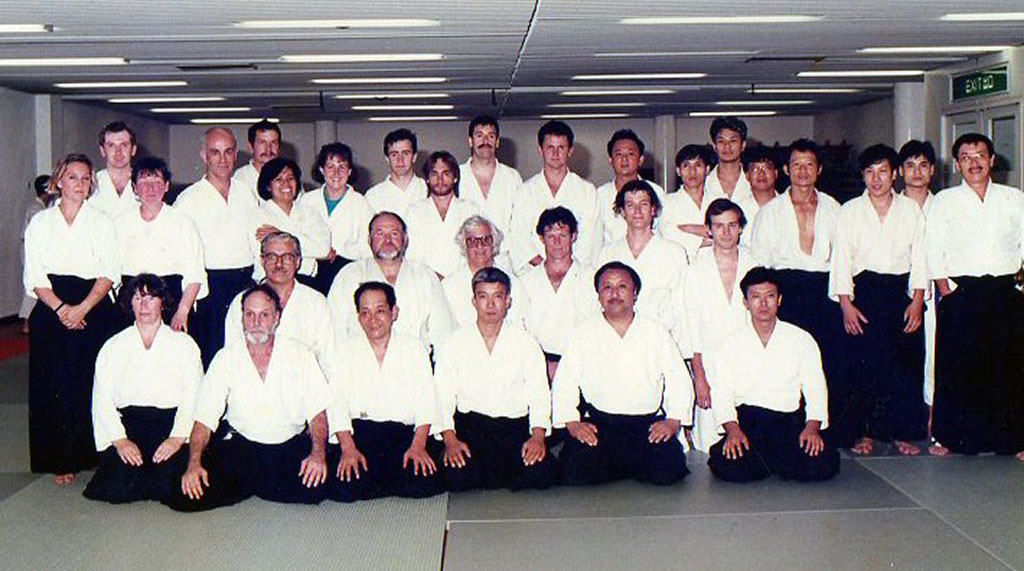
20th Anniversary of Hong Kong Aikido Association in 1991. Front row, second from left: Ken Cottier, Paul Lee, Ueshiba Moriteru, Fujita Masatake, and Kanazawa Takeshi.
Cottier left Hong Kong for good in 1997. He established his permanent residence in Chester, near Liverpool and continued to teach seminars in England and abroad. I met him around 2003 during one of those seminars in Liverpool.
My memories of Ken Cottier
Alan Ruddock was my teacher and he often spoke about Ken. One day, I told him that I was going to attend one of Ken’s seminars in England but his reaction surprised me. He said that he was happy that I would get to meet his friend, but he also gave me this warning:
Be very careful when taking ukemi for Ken, you need to be aware that he might hurt you.
I went to the seminar and found Cottier Sensei’s way of speaking and carrying himself to be very gentle. I distinctly remember that the way he carried himself on and off the mat exhibited no unnecessary formality or ego, which is a quality that Alan and Henry also shared. However, while on the mat, I was surprised to see that his aikido was very strong and direct, some may say “rough”. I took Alan’s advice and held back a bit on my ukemi, and everything went very well. I wrote to Alan later to tell him that I had survived the encounter with his friend!
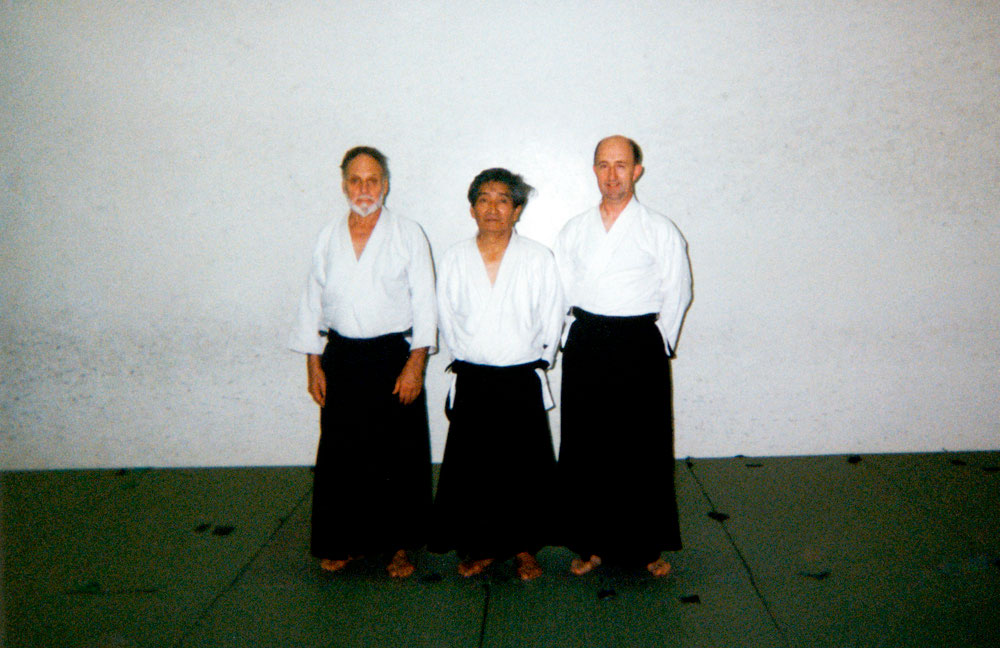
Ken Cottier, Henry Kono and Alan Ruddock
Cottier served the International Aikido Federation as Senior Member and as Directing Committee member. He was also a Senior Member at the British Aikido Federation. He was awarded the title of Shihan by the Aikikai on January 13th, 2002. He was promoted to the grade of 7th dan in 2007. He passed away on June 8th, 2008.
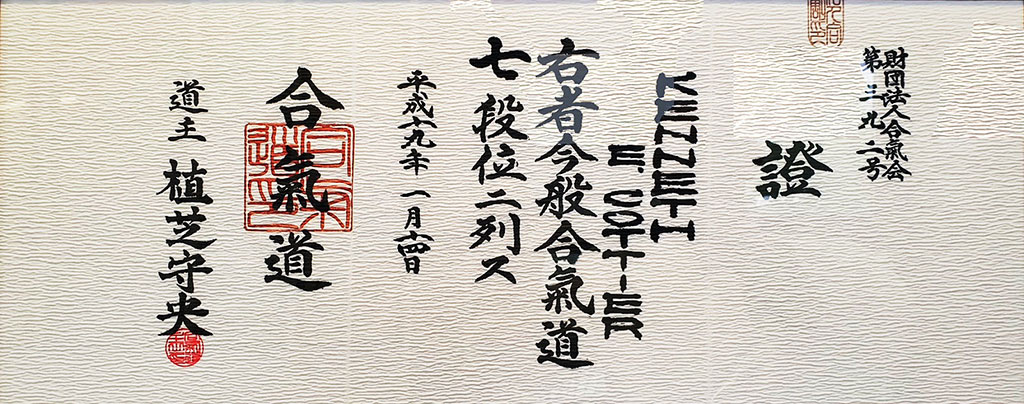
Ken Cottier’s 7th dan certificate, which bears the number 392.
Many thanks to Shane Riley Shihan (White Rose Aikikai), a close student of Cottier, for his help collecting materials for this article. Thank you also to Philip Smith Shihan (United Kingdom Aikikai) for the supplementary information.
About the author
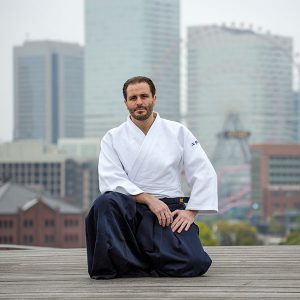
Guillaume Erard
Guillaume Erard is an author and educator, permanent resident of Japan. He has been training for over ten years at the Aikikai Headquarters in Tokyo, where he received the 6th Dan from Aikido Doshu Moriteru Ueshiba. He studied with some of the world’s leading Aikido instructors, including several direct students of O Sensei, and has produced a number of well regarded video interviews with them. Guillaume now heads the Yokohama AikiDojo and he regularly travels back to Europe to give lectures and seminars. Guillaume also holds the title of 5th Dan in Daito-ryu aiki-jujutsu and serves as Deputy Secretary for International Affairs of the Shikoku Headquarters. He is passionate about science and education, and he holds a PhD in Molecular Biology. Guillaume’s work can be accessed through his website and on his YouTube channel.






